Introduction
Why Do Pigeons Stand On One Leg: Pigeons, those ubiquitous urban birds that grace cityscapes worldwide, have long piqued the curiosity of both casual observers and scientific researchers alike with their peculiar behavior of standing on one leg. This seemingly simple act has intrigued minds for generations, prompting questions about its purpose and significance. In this intriguing world of pigeons and their one-legged stance, uncovering the fascinating reasons behind this avian mystery.
By peering into the intricate workings of these urban dwellers, we gain valuable insights into the adaptability and survival strategies of the animal kingdom in the midst of the urban sprawl. The act of a pigeon standing on one leg, while appearing deceptively simple, raises a series of questions that illuminate the intricate relationship between birds and their environment. Pigeons are not just passive observers of their surroundings, they are astute creatures finely attuned to the challenges posed by urban life.
To truly understand why pigeons engage in this behavior, we must consider a variety of factors, such as the role of thermoregulation in conserving energy, the potential benefits of reducing muscle fatigue, and the unique adaptations that have allowed them to thrive in densely populated urban landscapes. Pigeons are not the only birds known to exhibit this behavior, as it is observed in various avian species across the globe.
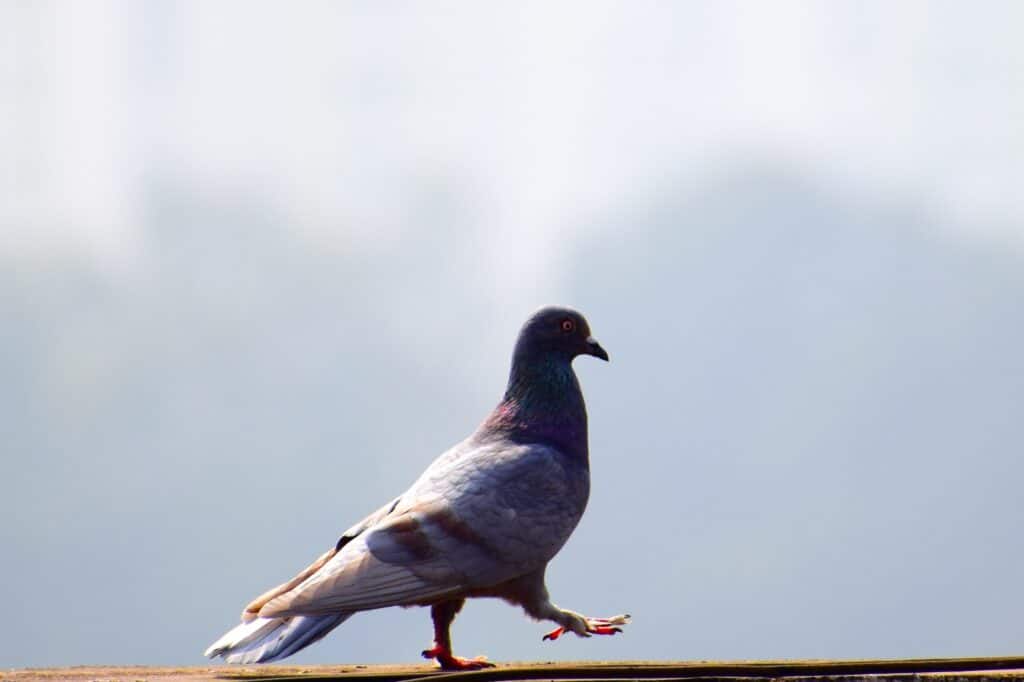
What does it mean when a pigeon stands on one leg?
As well as the benefit of conserving body heat, it is believed that standing on one leg may be used by birds as a means of camouflage, both to protect themselves from predators and to enable them to remain hidden when hunting for prey.
Thermoregulation: Pigeons, like many birds, use the one-legged stance as a means of thermoregulation. By tucking one leg close to their body, they reduce the exposed surface area, minimizing heat loss. This is particularly crucial in cold weather, allowing them to conserve energy and maintain their core temperature.
Muscle Fatigue Reduction: Alternating between legs while perched can help pigeons alleviate muscle fatigue. This behavior ensures that they are ready for quick takeoff or evasion if a threat arises.
Energy Conservation: Pigeons are opportunistic feeders, and conserving energy is essential for their survival. Standing on one leg reduces the energy expended while resting, as it requires less muscle activity compared to standing on both legs.
Social and Communication: In some instances, the one-legged stance may serve social or communication purposes within a flock. Pigeons may use it to convey submission, dominance, or even courtship signals to other pigeons.
Why do so many pigeons only have 1 leg?
As well as their corrosive effects, pigeon droppings are full of bacteria which can cause disease. Standing in their own poop means pigeons are susceptible to catching these diseases and if an infected foot or leg develops gangrene, then part of it may fall off.
Thermoregulation: One of the primary reasons pigeons stand on one leg is to regulate their body temperature. By tucking one leg close to their body, they reduce heat loss through exposed surface area, which is especially crucial during cold weather. This energy-saving strategy helps them maintain a stable core temperature, conserving vital resources for survival.
Muscle Fatigue Reduction: Pigeons, like all birds, need to rest and conserve energy while perched. Switching between legs allows them to alleviate muscle fatigue and discomfort, ensuring they can readily take flight if a sudden threat or opportunity arises.
Social Signaling: In some cases, the one-legged stance may have social implications. Pigeons may use it to convey dominance or submission to other pigeons within a flock, influencing social dynamics and hierarchy.
Injury or Health: Occasionally, a pigeon may stand on one leg due to injury or health issues. Injured legs or feet might be painful or immobilized, leading the bird to rest one leg while perching.
Do pigeons sleep standing on one leg?
Pigeons don’t sleep on one leg, they sleep on one toe. Their front toe to be exact. They do this so the blood flow works its way up to cool the body. The big toe absorbs the most pressure and it balances the rest of the body.
Pigeons do not typically sleep standing on one leg like some other bird species, such as flamingos. Instead, pigeons sleep while perched on both legs, similar to their daytime resting posture. When pigeons roost or settle down for the night, they often seek safe and elevated perches, such as tree branches, ledges, or building edges. In this perched position, they tuck their heads under their wings and relax, using both legs to support their weight.
The primary reason pigeons opt for a two-legged stance during sleep is practicality and stability. Sleeping on both legs provides a more secure and balanced posture, minimizing the risk of falling or losing balance while resting. Both legs engaged in gripping a perch help pigeons maintain a firm hold, ensuring their safety from predators during vulnerable nighttime hours.
While pigeons may occasionally shift their weight from one leg to another, especially during prolonged periods of rest, the common behavior during sleep involves both legs firmly anchored to their chosen roost. This posture allows pigeons to rest, conserve energy, and remain vigilant for potential threats, ensuring their survival in their urban and natural habitats.
What is the problem with pigeon legs?
It often appears at 2-3 years of age. It generally improves gradually as children develop strength and control. Pigeon toe can be caused by foot problems like metatarsus adductus or clubfoot. It can also be caused by problems with the alignment of the shin or thigh bones.
Injuries: Pigeons living in urban environments are at risk of leg injuries from encounters with obstacles, vehicles, or predators. Injured legs can make it difficult for them to perch, forage, or escape danger, impacting their survival.
Prolonged Perching: Pigeons often spend long hours perched on ledges and buildings, which can lead to fatigue and soreness in their leg muscles. This can affect their ability to fly quickly when needed.
Mites and Parasites: Like many birds, pigeons can suffer from mite infestations and parasitic infections, some of which may affect their legs. These parasites can cause discomfort, itchiness, and even damage to the leg tissues.
Cold Weather Challenges: In colder climates, pigeons may face frostbite or cold-related issues in their legs if they are unable to keep them warm. This is why they often use the one-legged stance to reduce heat loss in chilly conditions.
Overuse and Stress: Pigeons are resilient birds, but over time, the constant perching, walking, and flying can put stress on their leg joints and tendons, potentially leading to wear and tear issues.
Why do pigeons lose their feet?
Researchers have discovered that human hair might be the reason why pigeons lose their toes. Once used to deliver messages, these days pigeons are often reviled as urban pests. The birds, common in major cities such as Paris and London, can often be seen struggling to walk due to missing toes and deformed feet.
Predator Attacks: Pigeons are vulnerable to attacks from predators like birds of prey, cats, and even larger birds. These attacks can result in severe injuries, including the loss of a foot or leg.
Accidents: Pigeons often navigate through urban environments filled with potential hazards, including traffic, sharp objects, and buildings. Accidents such as getting trapped or caught in machinery can lead to traumatic injuries, including severed feet.
Infections and Diseases: Pigeons can contract infections or diseases that affect their extremities. These conditions may damage tissues, lead to necrosis (tissue death), or require amputation as a medical intervention to prevent the spread of infection.
Frostbite: In cold climates, pigeons are at risk of frostbite in their extremities, including their feet. Prolonged exposure to freezing temperatures can cause tissue damage, which may necessitate amputation if the condition worsens.
Human Interactions: Unfortunately, some pigeons may become entangled in discarded materials like plastic rings, threads, or wires, leading to constrictive injuries that could eventually result in the loss of a foot.
Are pigeon feet bad?
If a child is pigeon toed, it does not mean there is something wrong with the feet. It just tells which way the toes point when the child or person walks. There are three common causes of in-toeing. In children under 2 years, the most common cause is a shin bone that is twisted.
Disease Transmission: Pigeons, like all birds, can carry diseases, some of which can be transmitted to humans through contact with their feces. In areas with dense pigeon populations, this can pose health concerns.
Property Damage: Pigeons may roost on buildings and structures, leading to issues like nest debris, droppings, and potential property damage. This can be seen as a nuisance in urban settings.
Conflict with Humans: Some people view pigeons as pests because they compete for food with other wildlife or leave droppings on sidewalks and public spaces.
Why do pigeons lose their fingers?
For a long time scientists thought the fact that pigeons in urban environments often lost their toes was due to some form of infection, or was a reaction to chemical pollutants.
Molting: Pigeons undergo a natural process called molting, during which they shed and replace their old feathers with new ones. This process can temporarily leave them unable to fly as they regrow their flight feathers.
Injury: Pigeons can sustain injuries to their wings, which may result in the loss or damage of feathers. This can occur from collisions with objects, attacks by predators, or accidents.
Stress: Stress or extreme stressors in a pigeon’s environment can lead to feather damage or loss as the bird may engage in self-plucking behaviors.
Mite Infestations: External parasites like feather mites can infest pigeons, causing irritation and feather damage. Pigeons may attempt to alleviate the discomfort by plucking or damaging their feathers.
Poor Nutrition: Inadequate nutrition can result in poor feather quality, making them more susceptible to damage or loss.
Can pigeons fly with one leg?
Since a bird with a leg injury or many kinds of minor injury will often be able to fly to get away, it is rarely possible to catch such a bird whether it would benefit from treatment or not.
Pigeons, like many birds, have a remarkable ability to adapt to various challenges, including the loss of a limb. While flying with one leg is not their ideal condition, pigeons can indeed manage short flights, albeit with some limitations and adaptations.
When a pigeon loses one leg, it initially faces difficulties in achieving proper balance during takeoff and landing, as well as maintaining stability during flight. To compensate, pigeons rely more on wing movements for balance and control. They may also adjust their flying technique, making shallower turns and possibly flying at lower altitudes to minimize the risk of tumbling.
The extent to which a pigeon can adapt to flying with one leg largely depends on factors such as its overall health, age, and the time it has had to adjust to its new condition. Younger and healthier pigeons tend to adapt more effectively. It’s essential to note that flying with one leg places additional strain on the pigeon’s remaining leg and wing muscles. Over time, this can lead to muscle fatigue and potentially other health issues.
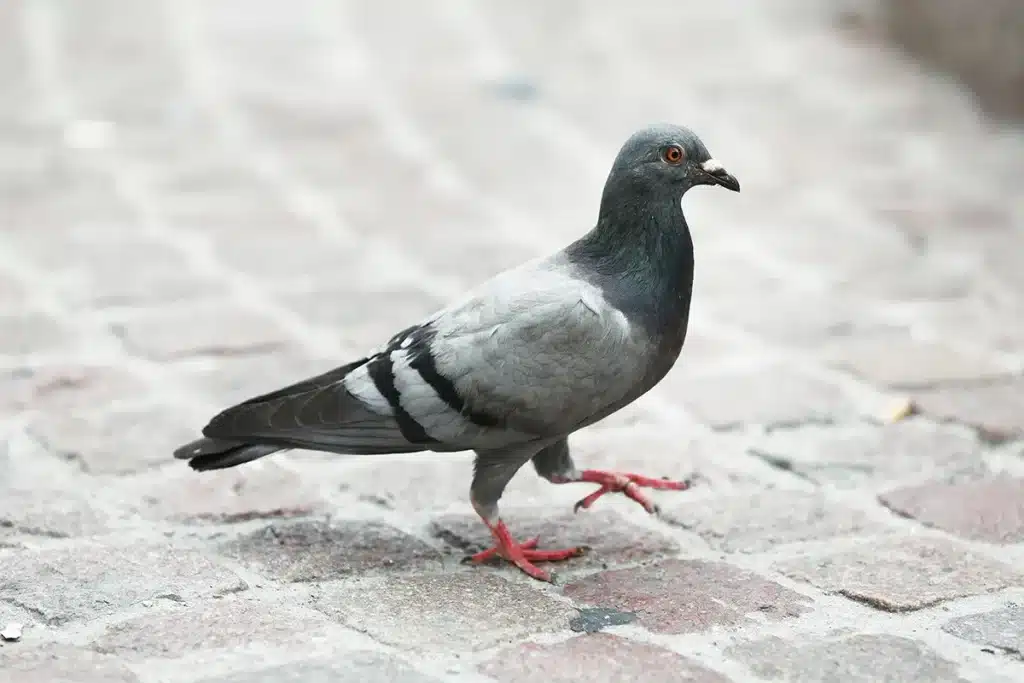
Conclusion
The act of pigeons standing on one leg is a fascinating behavior that offers a glimpse into the intricate adaptations of these birds to their urban environments. While there is no single definitive answer to why pigeons engage in this behavior, it is evident that multiple factors are at play. Thermoregulation likely plays a role, as reducing the exposed surface area of one leg helps conserve body heat during cold weather. This energy-saving strategy allows pigeons to maintain their core body temperature while minimizing heat loss.
The one-legged stance may also serve to reduce muscle fatigue, as it enables pigeons to alternate legs and avoid prolonged periods of muscle strain while perched. This adaptability is crucial for their survival in the dynamic urban landscape, where they must frequently find perches on buildings, ledges, and other structures. The prevalence of this behavior in various bird species suggests that it might have evolved as a general strategy for energy conservation and comfort among avian populations.
It may also have social or communication implications within pigeon flocks. In essence, pigeons’ one-legged stance exemplifies the remarkable ways in which animals adapt to their surroundings, even in the challenging context of city life. It underscores the resilience and versatility of nature’s creatures, highlighting the intricate balance between survival, energy conservation, and adaptation. The behavior of these urban aviators, we deepen our appreciation for the diverse and often surprising strategies that wildlife employs to thrive in the ever-changing world we share.

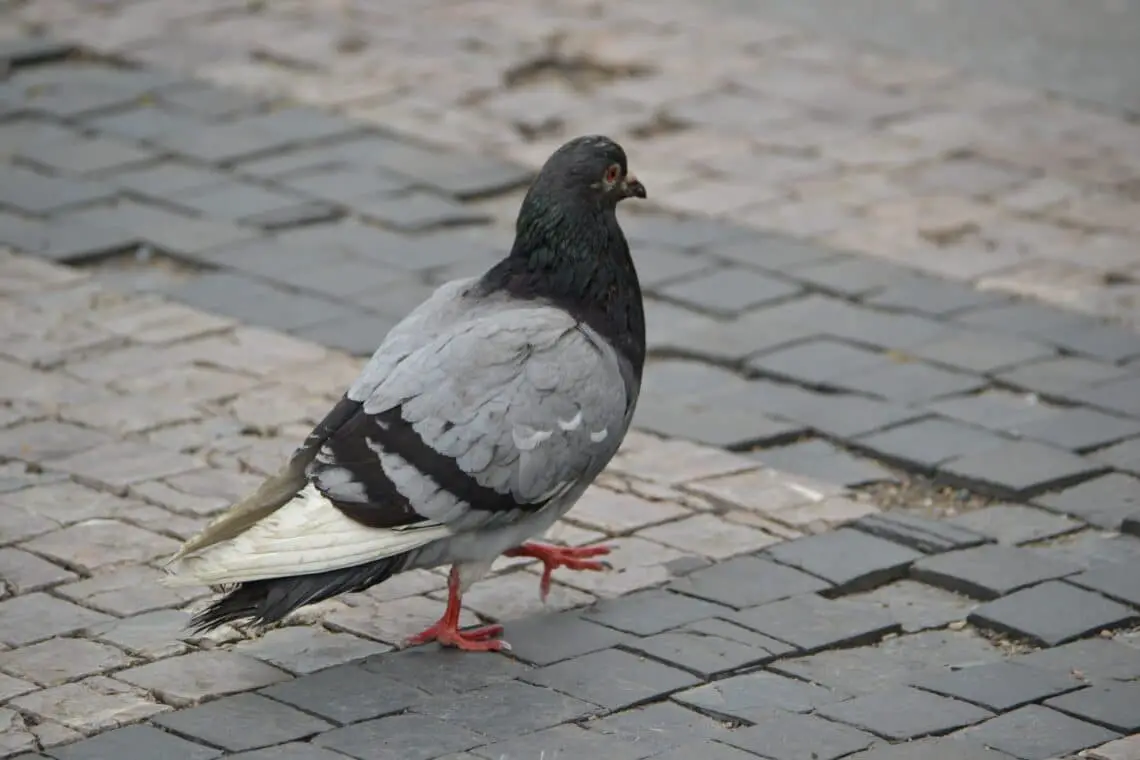
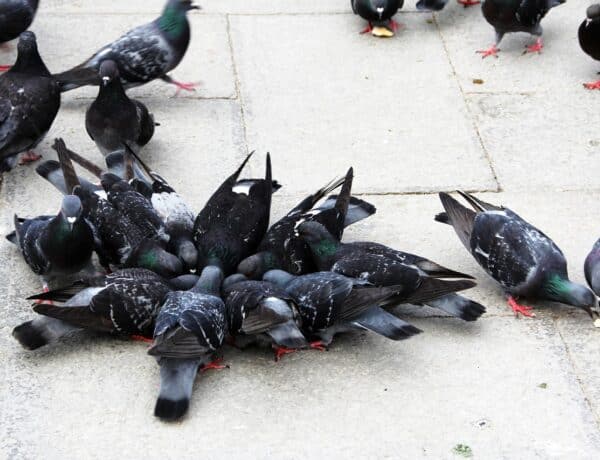
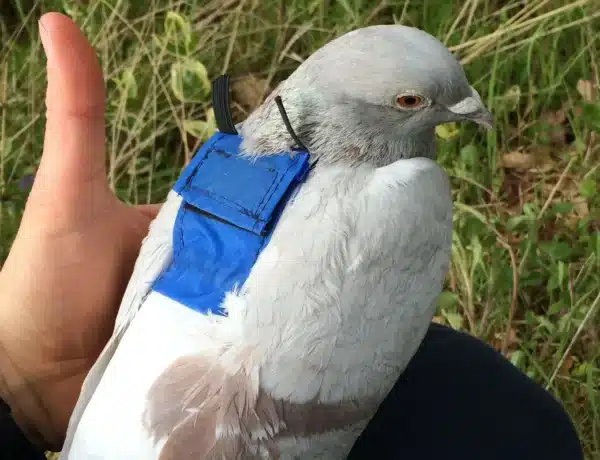
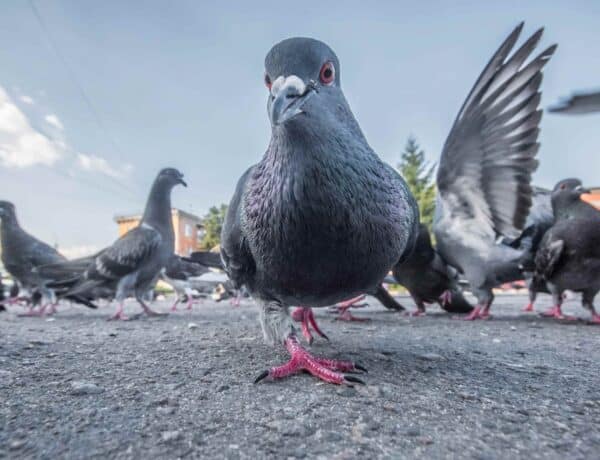
No Comments